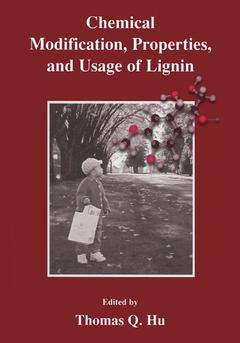One of the most significant challenges facing mankind in the twenty-first century is the development of a sustainable global economy. Within the scientific community, this calls for the development of processes and technologies that will allow the sustainable production of materials from renewable natural resources. Plant material, in particular lignin, is one such resource. During the annual production of about 100 million metric tons of chemical wood pulps worldwide, approximately 45 and 2 million metric tons/year of kraft lignin and lignosulfonates, respectively, are also generated. Although lignosulfonates have found many applications outside the pulp and paper industry, the majority of kraft lignin is being used internally as a low-grade fuel for the kraft pulping operation. A surplus of kraft lignin will become available as kraft mills increase their pulp production without expanding the capacity of their recovery boilers that utilize lignin as a fuel. There is a tremendous opportunity and an enormous economic incentive to find better uses of kraft lignin, lignosulfonates and other industriallignins. The pulp and paper industry not only produces an enormous amount of lignins as by products of chemical wood pulps, but it also utilizes about 10 million metric tons of lignin per year as a component of mechanical wood pulps and papers. Mechanical wood pulps, produced in a yield of 90-98% with the retention of lignin, are mainly used to make low-quality, non-permanent papers such as newsprint and telephone directories because of the light-induced photooxidation of lignin and the yellowing of the papers.




